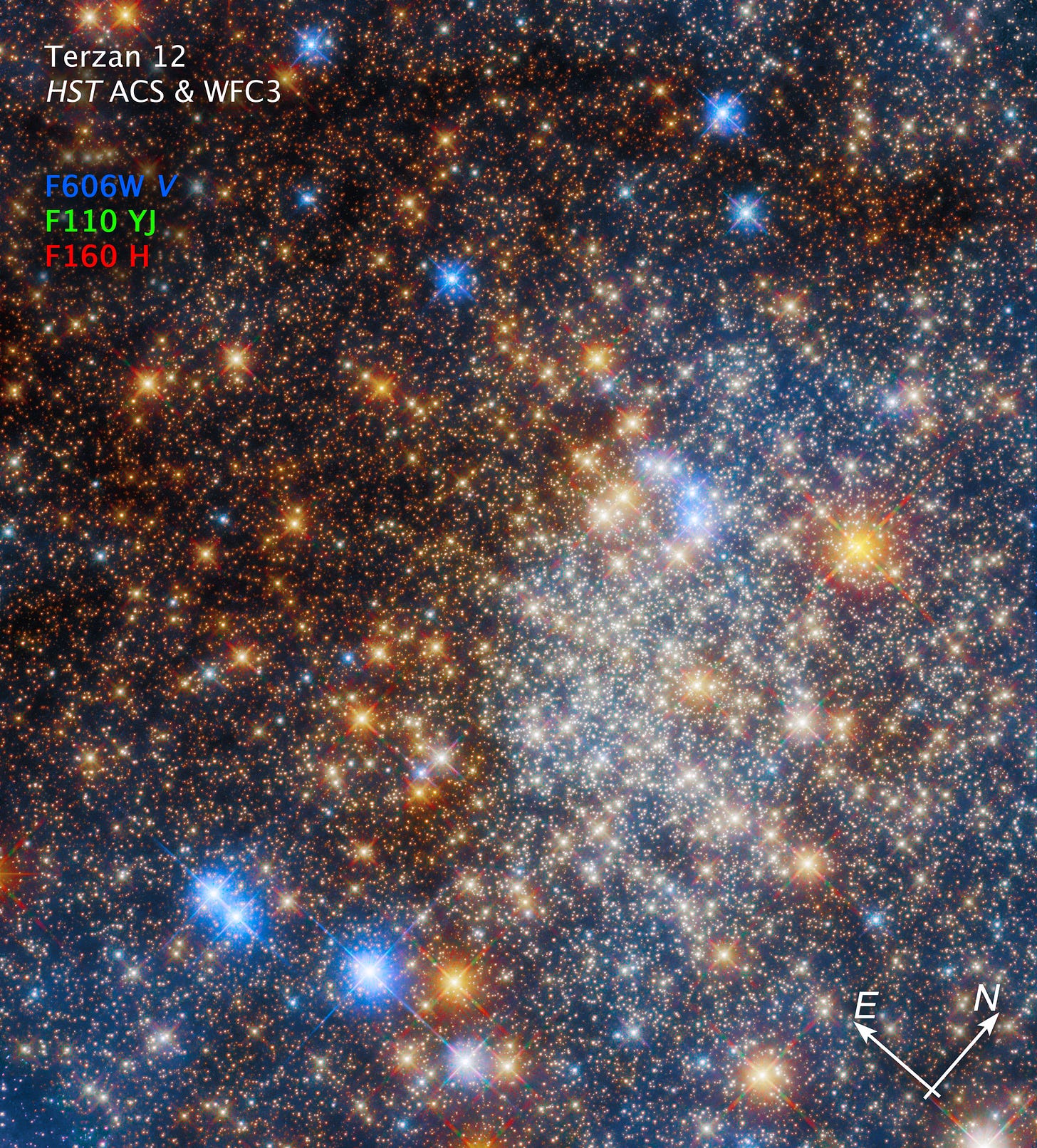Hubble captures ancient star cluster
This image from the Hubble Space Telescope has revealed the globular cluster Terzan 12 in stunning detail. The photo, taken using the Wide Field Camera 3, shows thousands of stars tightly packed together in a cluster. The stars are arranged in a roughly spherical shape, with a higher concentration of stars near the centre.
It is a compact beehive-like structure of hundreds of thousands of stars crowded together. Because of scattering by interstellar dust, the stars on the left side of the image appear redder
Key science
Terzan 12 is located about 15,000 light-years from Earth in the constellation of Sagittarius.
It is one of the most massive globular clusters in the Milky Way, with a mass of about 100 million solar masses. The cluster is also one of the most metal-rich globular clusters, meaning that it contains a relatively high abundance of elements heavier than hydrogen and helium.
The image also shows the effects of dust on the light from the stars in Terzan 12. The dust absorbs some of the light, making the cluster appear redder than it would otherwise be. The dust also scatters the light, creating a fuzzy appearance.
Despite the effects of dust, the new Hubble image is a remarkable view of the cluster. A glimpse into the heart of this massive and metal-rich globular cluster.
Hubble observations of the mighty cluster have also provided astronomers with new insights into the cluster's history. Terzan 12 may have formed in a different part of the Milky Way than it is currently located. The cluster may have been captured by the Milky Way’s gravity well billions of years ago.
Recommended resources
Gateway to Astronaut Photography of Earth
HiRISE (High Resolution Imaging Science Experiment Mars Reconnaissance Orbiter)



